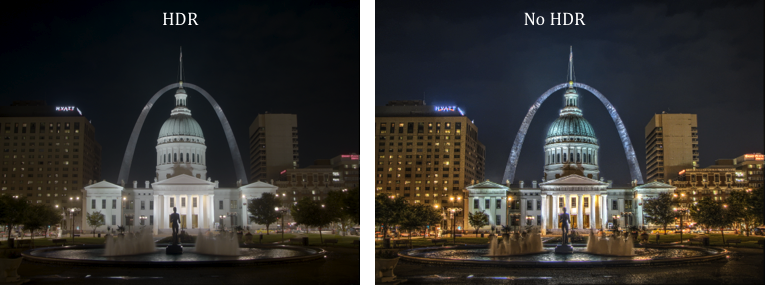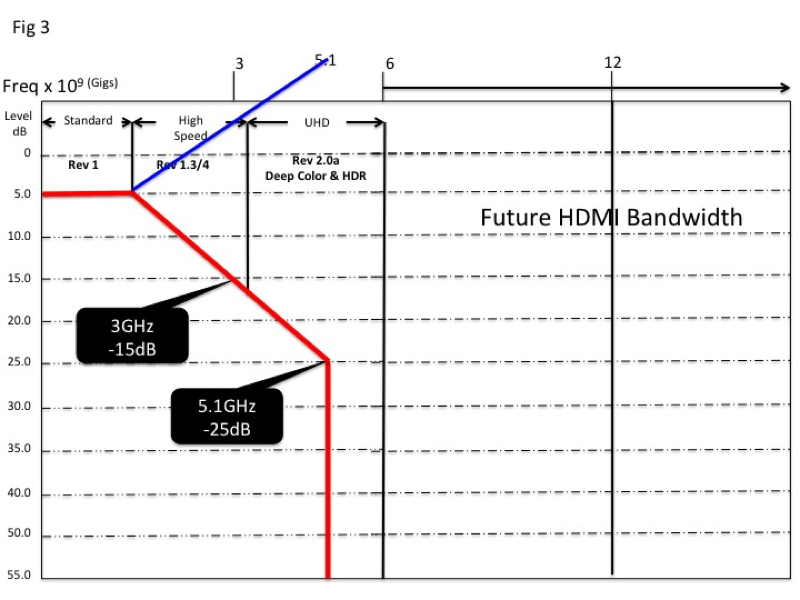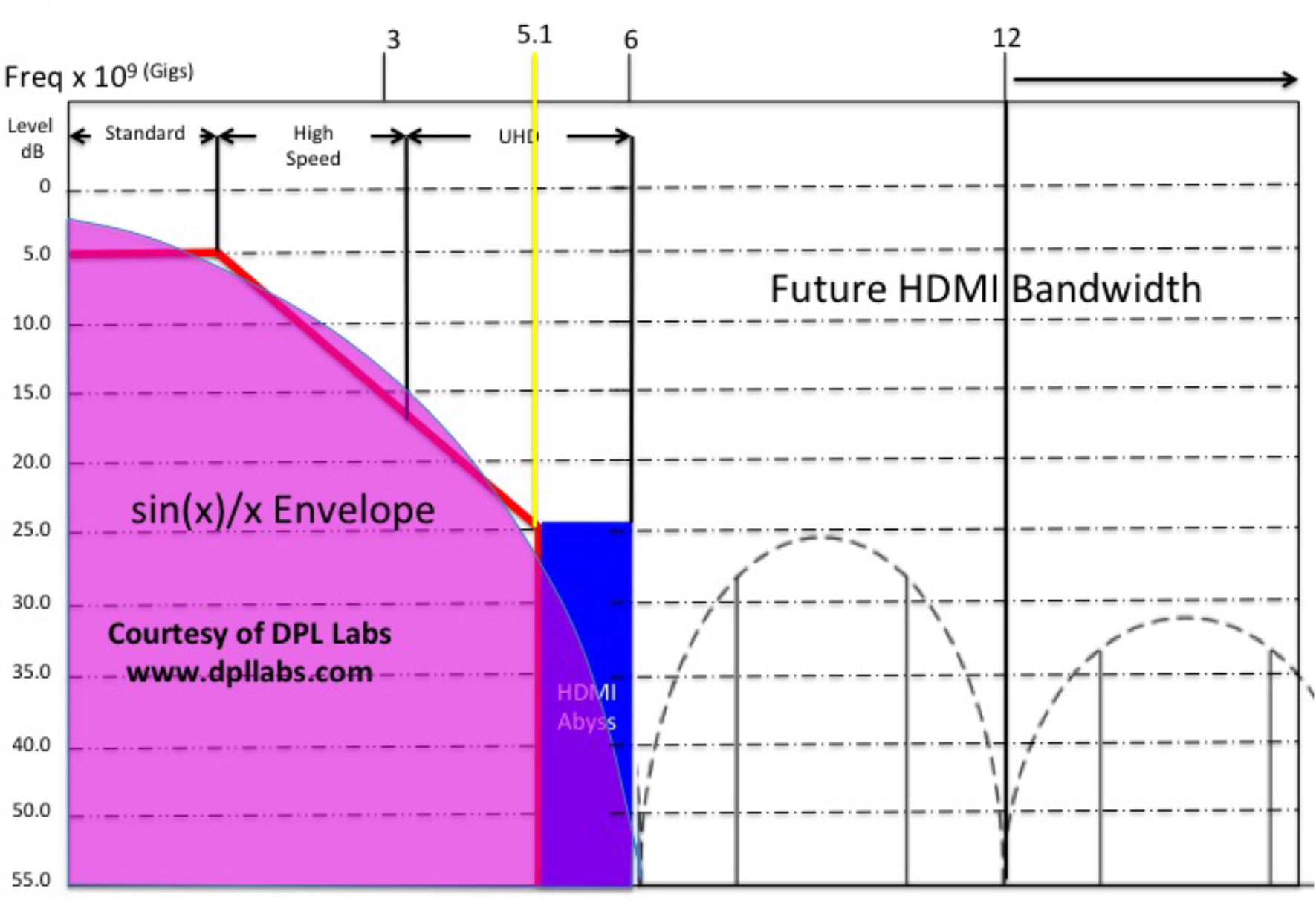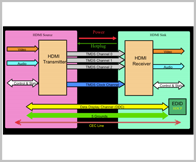4K technology is new to the consumer electronics industry. To help you better understand this new technology, we have asked our friend Jeff Boccaccio at DPL labs to clarify any misgivings or misunderstandings about these new standards:
As the HDMI interface continues to evolve, so does the complexity to managing it. Let’s face it, HDMI has set a new course for home entertainment both with audio and video reproduction. As much as HDMI’s technologies seem to have infinite capabilities, there continues to be a slight time delay between the new features that continue to be released and the hardware that must support it.
Since its introduction into the consumer electronics industry, HDMI has been pushed, pulled, stretched, and squeezed for better and better performance, which of course improves both its audio and video reproduction ability. The fact of the matter is that it should! This expansion capability was one of the major visions proposed when HDTV was introduced, giving way to the older NTSC (Nation Television Systems Committee) and PAL (Phase Alternating Line) standards. Both older systems were “land locked” in technology and bandwidth. There was no possible way of improving these older systems, and with the given speed that technology continues to grow then so should any new system that is proposed.
HDMI was one system that had the ability to “morph” itself into newer and more dynamic technical possibilities. From the day of its inception, the HDMI interface has changed countless times. As the format expanded so did the hardware that was associated with it. This includes Blu-Ray players, displays, switching devices, and AVR’s. In addition, all of these products require some kind of connection device (cable) that needed to expand in performance as well to connect them all together.
With the introduction of HDMI Rev 2.0, the interface will be pushed even harder. The bandwidth has basically doubled again, requiring connection devices to respond to these incredible data rates. What made it even harder to comprehend was HDMI’s announcement that we can continue to use the older cables that met the Rev 1.4 standards i.e. High Speed. The question that came to many industry pendants was how high was High Speed?
High Speed cable products were intended for Rev 1.4 products with bandwidths out to 3.4Gbps per channel or 10.2Gbps in totality. However, the new Rev 2.0 specification calls for 6Gbps per channel and 18Gbps in totality! This very fact has caused many adopters to question the specification in fear of any potential long-term interoperability issues. There is a science behind all this.
The need for this expanded bandwidth is to support an increase in audio capabilities and more dynamic 4K resolutions over and beyond what is currently available. One part of this expansion is to increase the frame rate of the video from 30 to 60Hz. However, in order to accomplish this and still fall inside the Rev 1.4 10.2Gbps envelopes, a trade-off had to take place. The color quality had to be reduced in order to “fit” a 60Hz frame rate video into a 10.2Gbps bandwidth. This 4K feature is known as the “Entry Level 4K” under Rev 2.0. Fig 1 demonstrates the loss of color detail when reducing the color quality. The color grading problems taking place in the “Standard Color” picture are quite obvious when compared with the “Deep Color” picture.

Fig 1
In order to obtain increased color depths and still increase the frame rate to 60Hz, more bandwidth is needed. In addition, a new feature known as HDR (High Dynamic Range) was also introduced, but only can be utilized with Deep Color resolution and bandwidth over the Rev 1.4, 10.2Gbps limits. The comparison in Fig 2 demonstrates the huge dynamic differences with and without HDR. This bandwidth area is supported as HDMI Rev 2.0a

Fig 2
To give you an example of the new HDMI Rev 2.0 overall bandwidth, draw your attention to Fig 3. The actual bandwidth begins at 300KHz and extends out to 6GHz. We broke down the bandwidth into three categories. “Standard”, “High Speed” and “UHD” (which is a name we will call this area since the specification does not recognize it).

Fig 3
The red line depicts HDMI’s minimum insertion loss through an HDMI cable. As we approach the end of “Standard” and the beginning of “High Speed” the insertion loss falls dramatically at a somewhat linear rate, passing by the end of “High Speed” at 3.4GHz and stopping at 5.1GHz. Here the limit takes a vertical plunge down into the “HDMI Abyss” shown in blue, never reaching the upper bandwidth limit of 6GHz with better than 55dB of insertion loss. Notice the opposing blue line to the red insertion loss line. This demonstrates the correctional equalization system that is physically located in every HDMI input device, effectively compensating for the 25dB attenuation all the way out to 5.1GHz. But what happens to the signal lost in the “HDMI Abyss”?
The answer to this question is rather interesting and disappointing at the same time. The disappointment is that most companies do not know or understand this physical phoneme. Since we are dealing with digital information, the need to understand how these signals respond when being modulated over a transmission line must be considered.

Fig 4
When modulating this type of data, a particular trigonometric function sin(x)/(x) takes place which allows the signal to extend beyond 5.1GHz. The pink lobe in Fig 4 depicts the amount of energy produced from the fundamental 3.4GHz originally produced under HDMI Rev 1.4. The lobe extends through the “HDMI Abyss” to 6Ghz. The two additional lobes in the dashed line are what many would define as harmonics of the fundamental. Every lobe provides double the bandwidth.
This is why each HDMI Rev 1.4 High Speed cable must perform better than what the specification calls for. If cables are not constructed with near perfect perfection, the odds are sin(x)/(x) will not provide the necessary bandwidth to achieve full 4K Deep Color functionality.
LEARN MORE:



